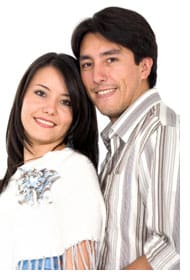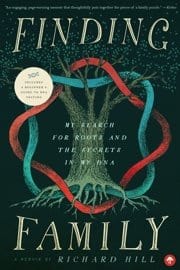
NOTE: Richard Hill founded the DNA Testing Adviser website and managed it until August 2021. The details of his personal search for birth parents are both fascinating and educational. He shared his story over four separate pages and, with permission, his first-person words have been preserved here.
In my search for biological roots, I did a DNA sibling test. This is sometimes called a “kinship” test and many labs still offer it, even though far better alternatives are now available.
I used this test myself in 2007. Trying to identify which of five deceased brothers was my birth father, I compared myself to a son of each man.
One of these sons showed the highest probability of being my half brother. So I assumed his father had been mine too.
Over the next few years, I heard from many people disappointed by the inconclusive results of DNA sibling tests. Yet I remained comfortable with my own conclusion.
Why I No Longer Recommend This Type of Test
In late 2011 and early 2012, I tested some of my paternal relatives on 23andMe and Family Finder.
I was shocked to learn that my DNA sibling test had yielded the WRONG ANSWER.
My real birth father was NOT the man indicated by the DNA sibling test.
I need to make this extremely clear: Do NOT waste your money on a conventional DNA sibling test.
If you want to confirm a relationship between any two closely related people, you should choose one of the two newer tests mentioned on this page.
Just click either or both links to see current pricing. The price is PER KIT. You only need one kit to test yourself against other people already in the company’s database. But if you want to test yourself against a specific person, then both of you need to order and submit test kits.
If you haven’t already read the earlier parts of my adoption search story, you can follow these links:

Read My Entire Story in a New Book
I have written a book that tells my whole story with all the details and all the highs and lows. In it, I describe in detail every DNA test that I took to finally learn the truth about my biological roots.
Whether you’re searching for your own roots or just craving a darn good read, this is a book you will likely devour in one sitting…and wholeheartedly recommend to others.
Finding Family: My Search for Roots and the Secrets in My DNA
Why Sibling Tests Are Unreliable
A DNA sibling test looks at a small number of locations in the chromosome pairs that you inherit from both parents. It counts the number of times a given sequence repeats at each location.
These sequences are called Short Tandem Repeats (STRs). Each person inherits one STR value from each parent. A test report shows a pair of numbers such as (9, 11), (14, 14), or (17, 21) for each marker.
STR markers work great in paternity testing because the close parent-child relationship has REQUIRED values. For example, if a child has the values 9 and 11 at a given marker, she must have received the 9 from one parent and the 11 from the other.
For other relationships, like full siblings, half siblings, uncle-nephew, and grandparent-grandchild, there are NO required values. Labs are forced to rely on statistical formulas to calculate the probability that two people have a certain relationship.
This means that results are often inconclusive and—at best—a statistical GUESS. The DNA sibling test CANNOT provide absolute “Yes” or “No” answers.
Why Newer Tests are Far Superior
Today there are better alternatives for relationship testing: Family Finder, AncestryDNA, 23andMe, and MyHeritage DNA are all better options.
These new tests compare two people on about 700,000 markers…not just 16 or 24. Instead of counting and comparing STRs, they look for long blocks of DNA that are identical in both subjects.
Blocks above a certain length had to pass down from a common ancestor and the more long blocks in common, the closer the relationship.
These new tests don’t guess. They actually MEASURE the amount of shared DNA. For any relationship out to first cousin (and usually second cousin), they can absolutely confirm or deny the suspected relationship.
